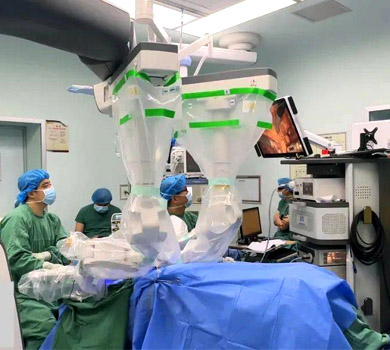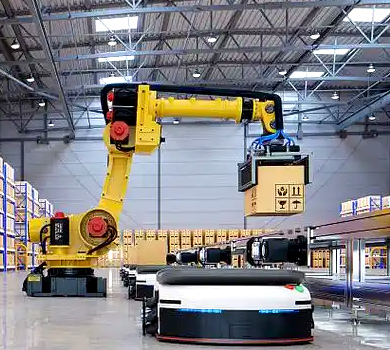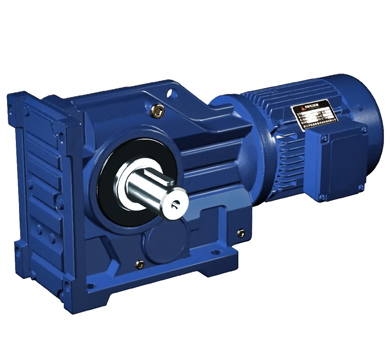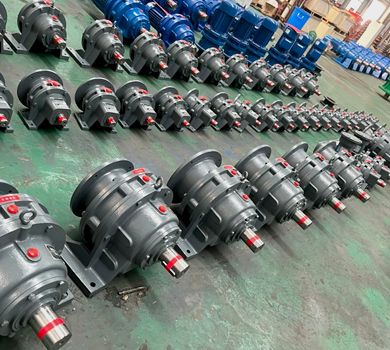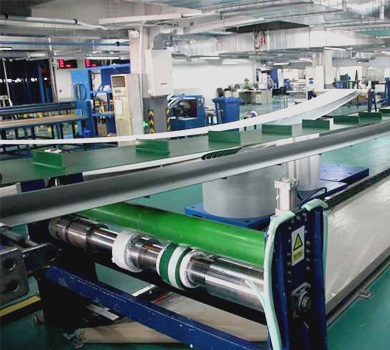Industry Challenges and Pain Points Analysis:
Industrial robot spraying in metal parts painting lines represents a critical segment of automation technology, especially in automotive, appliance, and precision manufacturing sectors. The system typically consists of robotic arms, high-pressure spray nozzles, paint circulation units, and control systems that coordinate motion and coating application with high accuracy and consistency.
Despite the industry’s maturity, key challenges persist:
- High Torque and Precision Requirements: Spray robots must maintain stability and accuracy during high-speed and high-load operations to ensure even paint coverage and reduce waste.
- System Reliability: Continuous operation and exposure to chemical solvents and paint residues require gearboxes with excellent durability and corrosion resistance.
- Energy Efficiency: The industry is increasingly under pressure to reduce energy consumption and carbon footprint while maintaining productivity.
- Compact Design: Modern painting lines demand more integration and modular design, which places higher demands on the spatial efficiency of mechanical components such as gearboxes.
- High Maintenance Frequency: Frequent cleaning and maintenance are necessary due to exposure to aggressive solvents and environmental conditions.
Key Role and Technical Requirements of Gearboxes in This Industry:
In the context of robot spraying systems for metal parts, gearboxes are essential components that convert motor speed into the precise and controlled motion needed for high-quality spraying. The following are the core technical requirements:
- High Torque Density: Gearboxes must deliver sufficient torque in a compact size to accommodate the space constraints of modern robot joints.
- Precision and Stability: Backlash and misalignment must be minimized to maintain coating quality and system accuracy.
- Fast Response Speed: Quick and smooth acceleration/deceleration is crucial for the robotic arms to follow complex paths during painting.
- Self-Locking Capabilities: This is vital for maintaining position in the event of power loss or emergency stop, especially in vertical spraying applications.
- Low Noise and Smooth Transmission: To meet workplace safety and noise regulations, gearboxes need to operate with minimal vibration and sound.
- Environmental Adaptability: Gearboxes must be designed to function in challenging environments, including high temperatures, humidity, and exposure to solvents and paint vapors.
- Long Service Life and Low Maintenance: Reducing downtime and maintenance frequency is essential for cost efficiency and production continuity.
Waimica Worm Gearbox Solution for the Painting Line:
Waimica’s worm gearboxes are specifically tailored to address the challenges of industrial robot spraying systems in metal parts painting lines. The design integrates multiple advanced technologies to enhance performance, reliability, and integration flexibility. Below is a detailed analysis of how Waimica’s worm gearboxes meet the industry’s demands:
- Structural Design:
- Compact and Modular: Waimica worm gearboxes are designed with a space-saving footprint and modular assembly, enabling easy integration into robotic joints and conveyor systems.
- Mounting Flexibility: Multiple mounting options and input flange configurations allow for seamless adaptation to various robot platforms and system layouts.
- Performance Parameters:
- High Torque Output: The worm gear design ensures high torque density, suitable for heavy-duty painting operations.
- Backlash Control: Precision-ground worm gears and optimized gear meshing reduce backlash to below 1 arcminute, ensuring high motion accuracy.
- Efficiency: A typical efficiency range of 75-90% is achieved through high-quality materials and optimized lubrication systems.
- Input Flange Variety: Standardized input flange types such as ISO, IEC, and DIN are available for compatibility with global motor standards.
- Special Operating Conditions:
- High-Temperature Tolerance: Designed for operation in environments up to 100°C, with optional cooling solutions for extended use in hotter zones.
- High-Cleanliness Requirements: Special surface treatments and sealed bearing designs meet clean room and paint booth standards.
- Corrosion Resistance: Gearboxes are available with anti-corrosion coatings and stainless steel components for use in solvent-exposed areas.
- IP Protection Class: IP54 standard ensures protection against dust and water jets, with IP65 and IP67 options available for harsher conditions.
| Parameter | Value |
|---|---|
| Torque Range (Nm) | 50 - 2000 |
| Backlash (arcmin) | ≤1 |
| Efficiency (%) | 75 - 90 |
| Input Flange Types | ISO, IEC, DIN |
| Max. Operating Temperature (°C) | 100 (with optional cooling: 130) |
| Protection Rating (IP) | IP54 (standard), IP65, IP67 (optional) |
| Service Life (h) | 30,000 - 50,000 |
Conclusion and Waimica Brand Value Summary:
Waimica worm gearboxes have proven to be a reliable and high-performance alternative in industrial robot spraying systems for metal parts painting lines. The combination of high torque density, precision, low noise, and environmental resilience makes Waimica a trusted choice for system integrators and original equipment manufacturers (OEMs) worldwide.
As a premium "Made in China" provider, Waimica offers cost-effective solutions that do not compromise on quality or performance. Its ability to customize solutions to specific customer needs and deliver on time underscores its commitment to excellence and long-term partnerships.
Looking ahead, the metal parts painting industry is expected to further adopt robotized systems with advanced motion control and intelligent diagnostics. Waimica is well-positioned to support this transformation, leveraging its R&D capabilities and manufacturing expertise to deliver next-generation mechanical solutions that meet evolving global standards.


